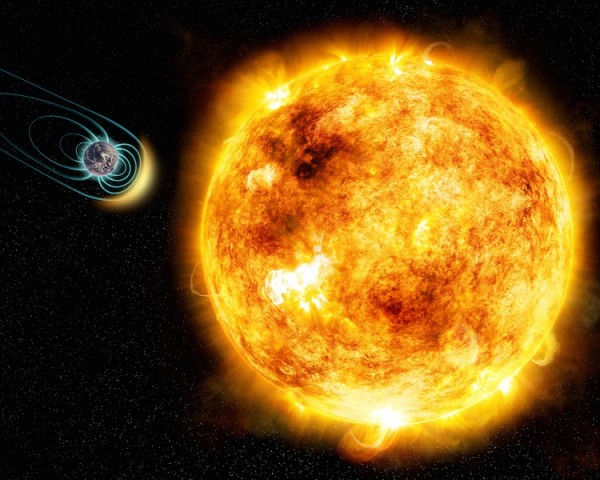By Ana Verayo, | March 17, 2016

A magnetosphere can shield a planet from its sun's superflares, making it more conducive for life.
Apart from the presence of water and oxygen, life began on Earth not just with these two essential life ingredients but also, the existence of a magnetic field that serves as protection from radioactivity in space.
In this new study, scientists determined that a star known as Kappa Ceti that is also similar to our sun, was discovered to play a crucial role in how a planet can be potentially habitable due to the presence of a magnetosphere.
Like Us on Facebook
According to lead author of the study, Jose-Dias Do Nascimento of the Harvard-Smithsonian Center for Astrophysics and University of Rio G do Norte in Brazil, in order for a planet to become conducive to life, a planet needs some heat, water and also shelter from a young, violent Sun emitting harsh, radioactive rays. He adds that infant Earth did not possessed as much protection as it does now but it was ample enough.
This sun-like star, Kappa Ceti, is located some 30 light years away in the constellation Cetus the Whale, which is younger than our sun. The team estimates that this star is about 400 to 600 million years old which coincides with its rotation period revealing that this age is also corresponding at the time when life first appeared on the planet.
Kappa Ceti is very active similar to other stars this age, emitting strong magnetic waves. This star can propel a steady, powerful stream of plasma or ionized gases that can reach into deep space, where its stellar winds can reach up to 50 times stronger than our sun's solar winds, according to researchers.
These powerful stellar winds can smash and destroy the atmosphere of any planet in the habitable zone of any star system, not unless that planet possesses a magnetic field as a shield.
In this new study, the team simulated the strong stellar winds of Kappa Ceti and its effects on an infant Earth. Scientists believe that Earth's magnetic field is just as strong as it was during its early days or just slightly weaker. Researchers reveal that the magnetosphere of the planet is about one third to one half as large as it is today.
Apart from this, Kappa Ceti also revealed evidence of superflares which are giant eruptions that can release 10 to 100 million times of energy, more than the biggest flares ever emitted by our sun. These flares are also known to strip down a planet's atmosphere.
Researchers say that by studying Kappa Ceti, they learned how frequent it produces superflares which can also reveal how much our sun would have released them when it was young and violent. This new study is published in The Astrophysical Journal Letters.
-
Use of Coronavirus Pandemic Drones Raises Privacy Concerns: Drones Spread Fear, Local Officials Say

-
Coronavirus Hampers The Delivery Of Lockheed Martin F-35 Stealth Fighters For 2020

-
Instagram Speeds Up Plans to Add Account Memorialization Feature Due to COVID-19 Deaths

-
NASA: Perseverance Plans to Bring 'Mars Rock' to Earth in 2031

-
600 Dead And 3,000 In The Hospital as Iranians Believed Drinking High-Concentrations of Alcohol Can Cure The Coronavirus

-
600 Dead And 3,000 In The Hospital as Iranians Believed Drinking High-Concentrations of Alcohol Can Cure The Coronavirus

-
COVID-19: Doctors, Nurses Use Virtual Reality to Learn New Skills in Treating Coronavirus Patients







